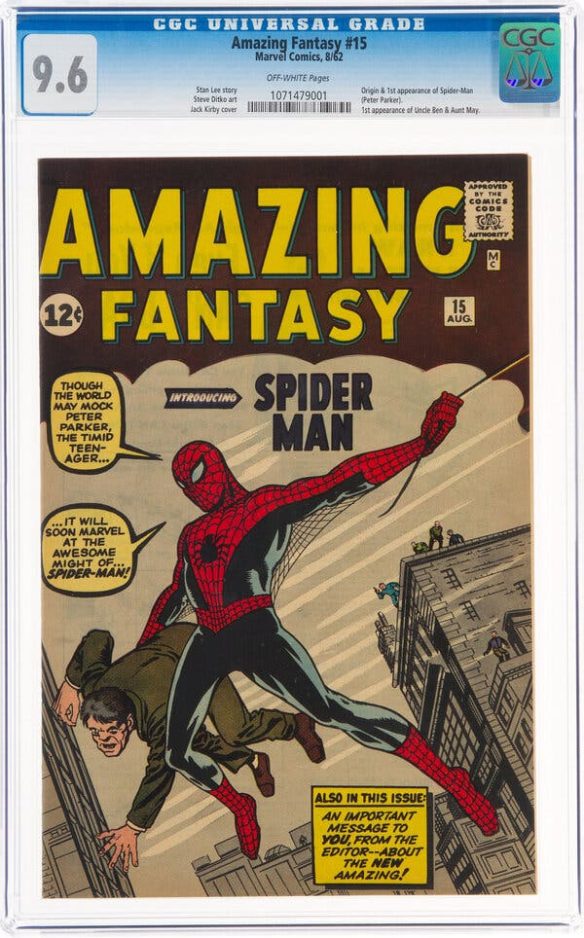(1) WONDERS NEVER CEASE. The 1982 Trans-Atlantic Fan Fund delegate Kevin Smith has finished his trip report: “I finally got a round tuit”. You can read it online here: “TAFF Trip”.
40 years ago, in September 1982, I went to the USA, primarily to attend Chicon IV, the World Science Fiction Convention in Chicago. The trip was paid for by TAFF, the Trans-Atlantic Fan Fund, and one of the expectations is that anyone going on a TAFF Trip should write a report about it. That’s what I’ve done, finally. You can find it under ‘TAFF Trip’ in the menu bar above.
From the “Introduction”:
What I said before I left America to come home was: “I’ll write a short trip report, but do it quickly when I get back.”
As I recall, I wrote this in my next fanzine: “It were great!”
Well, it met the ‘short’ and ‘do it quickly’ criteria, but probably failed the ‘trip report’ hurdle.
So here we are. It has taken a mere 40 years, but is quite short. What more could you ask…?
[That’s what we call a rhetorical question, in the trade. You’re not supposed to answer it. Especially not like that, it’s not nice.]
(2) SCARES IN THE REAR-VIEW MIRROR. Scares That Care announced in a press release they are discontinuing their Charity Weekend event:
Since its founding in 2006, the Scares That Care charity has raised nearly $400,000 for organizations, children, and families impacted by illness, burns, or breast cancer. We’ve achieved that thanks to the generosity of you – our Scares That Care family. Due to rising costs involved in producing a show of this type, the Board of Directors has unanimously decided to discontinue our Charity Weekend event. This will allow us to focus on our other fundraising efforts, so that we can expand our goals. While we understand that many of you will be disappointed by this news, we ask you to remember that we have never been a charity that supports a convention. Rather, the convention has always supported the charity. As such, our overall mission continues, and we invite our Scares That Care family to support our other upcoming fundraisers and events. Details on our annual Christmas Dance, AuthorCon II, and other surprises are forthcoming.
Brian Keene added in his newsletter:
…But I do want to assure people that the convention was profitable. That’s not the issue. the issue is that we are a charity, and as a charity, we need to look at costs versus profit. The economy and rising costs in everything from fuel to food is hitting all of these big multi-media conventions….
(3) KGB. Fantastic Fiction at KGB reading series hosts Ellen Datlow and Matthew Kressel present Richard Butner and Veronica Schanoes in-person on Wednesday, August 17 at 7:00 p.m. Eastern. Masks welcome.
Richard Butner
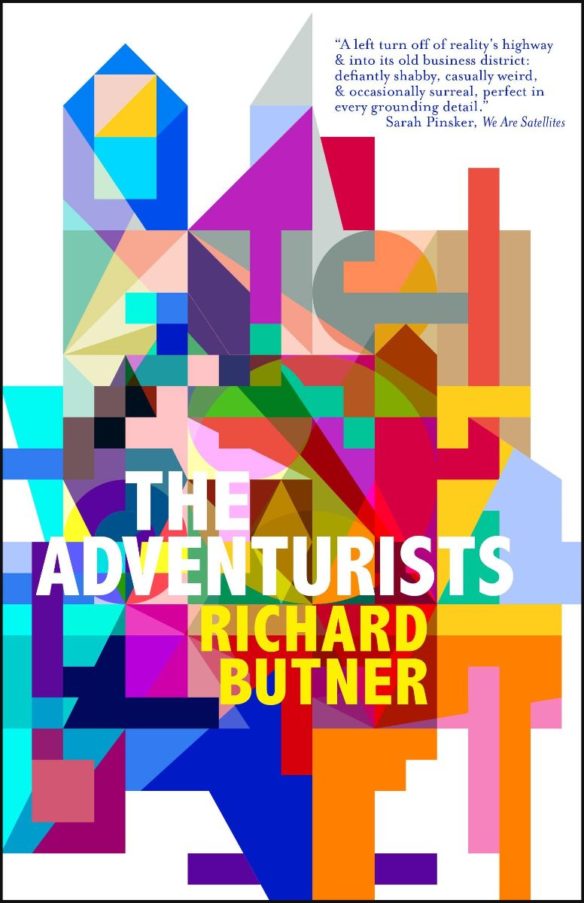
Richard Butner’s short fiction has appeared in Year’s Best Fantasy & Horror, been shortlisted for the Speculative Literature Foundation’s Fountain Award, and nominated for the Shirley Jackson Award. His collection The Adventurists was published by Small Beer Press in March. He lives in North Carolina, where he runs the annual Sycamore Hill Writers’ Conference.
Veronica Schanoes

Veronica Schanoes is a writer whose debut short story collection, Burning Girls and Other Stories, appeared in paperback from Tordotcom in June. She is also an associate professor in the English department of Queens College – CUNY. In both guises, she works with fairy tales and fantasy.
Where: KGB Bar, 85 East 4th Street, New York, NY 10003. (Just off 2nd Ave, upstairs)
(4) NEWS FROM THE FRONT. In “Covers! What are They Good For?” Sarah A. Hoyt continues her Mad Genius Club series about book covers by telling us —
What covers aren’t for:
1- to be beautiful. I mean, the eye is attracted to beautiful things, so beauty helps, but is not needed.
2- to be an accurate representation of your book. Again, if your character is a slim redhead and the cover model is a zaftig brunette (who is also very pretty) no one cares. Before they read the book, the readers don’t know that. And after they read the book they might leave a review that says “I don’t know where the cover brunette came from” but that won’t stop them promoting you if they loved the book.
3- be exactly what you envisioned in your head while writing the book. Unless of course, you’re an amazing cover artist on the side, and know exactly what sells in your genre or subgenre the month your book comes out.
4- (Contra insty trolls) signaling to the world how smart and sophisticated you are. (Unless you’re selling litewawy and little because the illusion of smart and sophisticated is essential there.)
She follows that beginning with a longer list of what covers are for.
(5) ROUNDUP TIME. G.W. Thomas shares a list of “Science Fiction Writers Who Wrote Westerns” at Dark Worlds Quarterly.
The collection Westerns of the 40s (1977) surprised me when I saw who the editor was, Damon Knight. That pillar of the Science Fiction community published the award-winning anthology series Orbit for decades. But he also did a couple of books about Pulp SF from the 1930s and 1940s. So why not some Cowboy stories from the same time period?
The bigger surprise was who he chose for that book. Not your usual W. C. Tuttle, Luke Short and Walter Tompkins stuff. Nope, Clifford D. Simak, John D. MacDonald and Murray Leinster. Three of the seven were written by Science Fiction authors. Now you can make the case for John D. MacDonald’s true fame is in the detective/suspense field. This is true, but old John D. did write Science Fiction for a spell before he quit it because it was too easy….
(6) TOO MUCH THE SAME THING? At Black Gate, Joe Bonadonna talks about his personal experiences with the sword and sorcery genre and why it withered in the 1980s in “IMHO: A Personal History Of Sword & Sorcery And Heroic Fantasy”.
Conan, King Kull, Cormac, Bran Mak Morn — names that conjure magic, characters often imitated, but never duplicated. These creations of Robert E. Howard (circa 1930) started the Sword and Sorcery boom of the 1960s and early 1970s. Then there are the barbarian warriors inspired by Howard — “Clonans,” as one writer recently referred to these sword-slinging, muscle-bound characters. A fair observation, but in some cases, not so true….
(7) WRITING FOR ANIMATION. [Item by Cora Buhlert.] The For Eternia podcast has a lengthy interview with Tim Sheridan, who was one of the writers of Masters of the Universe: Revelation and also worked on a lot of other animated shows. Even if you haven’t watched the show, Sheridan has a lot of things to say about writing and storytelling.
(8) GET HUMBLE. There’s a Humble Bundle for “Image Comics 30th Anniversary: The 2000s” – pay what you want and help charity.
Image Comics turns 30 this year and we’re ready to celebrate! This bundle is all about Image in the 2000s, including the debuts of well-loved series like Invincible Volume 1: Family Matters, The Walking Dead Volume 1: Days Gone By, and Fear Agent: Final Edition Volume 1! On top of the new heroes, villains, and sagas the decade brought, this bundle also includes the continuing adventures of fan-favorite Image characters Spawn,The Darkness, and Savage Dragon. Grab this bundle and help support BINC (Book Industry Charitable Foundation)!
Daniel Dern comments on the deal: “At this price (range), if you have any interest in these Image titles — or even want to see if you’re interested — it’s a hard bargain to resist.
“(Note, I only recently discovered Eric Larsen’s Savage Dragon. They are great! A mix of whacky plots, text/character/art references to Marvel, DC and other bits, and more. (Caution: Lots of violence, sex, gore and bad science. If you want to start ’em from the beginning, Hoopla has them — the Archives editions have more per borrow (~25 issues each), but, IIRC, are in black-and-white, it’s possible (I haven’t checked) that the fewer-paged non-Archives are in color.)”

(9) RAYMOND BRIGGS (1934-2022). [Item by Cora Buhlert.] Writer and illustrator Raymond Briggs died August 9 aged 88. He is best known for The Snowman (which is genre, because it features a magical flying snowman), but a lot of his other work such as Fungus the Bogeyman is genre as well. He also wrote and drew the terribly depressing nuclear war graphic novel (also filmed) Where the Wind Blows, where a nice elderly British couple dies slowly of radiation poisoning in spite of attempting to follow the official UK government civil defense guidelines.
Lots of tributes to him from the Guardian:
- “Snowman author Raymond Briggs dies aged 88”;
- “’We’ll still be watching in 50 years’: how Raymond Briggs’s The Snowman changed Christmas”;
- “The Snowman, the Bogeyman and Father Christmas: the world of Raymond Briggs”;
- “Raymond Briggs obituary”.
(10) MEDIA BIRTHDAY.
2008 – [By Cat Eldridge.] Fourteen years ago on this day, the animated Star Wars: The Clone Wars premiered. It is the first fully animated film in the Star Wars franchise and takes place shortly after Episode II – Attack of the Clones, at the start of the Clone Wars.
Ok let me note that I was in the minority of individuals that really liked it. I liked the voice acting and thought the story was quite excellent. Yes, the animation was odd, but Lucas has the right to do what he wants as it’s his damn universe, not ours, something’s fans seem to keep forgetting.
It received largely hostile, and I mean hostile reviews mainly due to both the story here and the animation style which offended, well, almost everyone. Now that’s out of the way let’s look at it.
It was written by Henry Gilroy, Steven Melching and Scott Murphy. Keep the first writer in mind as he will go to be the writer on oh-so-stellar Star Wars: The Clone Wars which will run for seven series and over one hundred and thirty episodes.
The voice talent was second to none: Matt Lanter, Ashley Eckstein, James Arnold Taylor, Dee Bradley Baker, Ian Abercrombie, Catherine Taber, Christopher Lee, Samuel L. Jackson and Anthony Daniels. Many of these will carry over into the later series. Tom Kane is the narrator here as he is in later series.
So why the hostile reaction? The style is an homage to the stylized looks of both Japanese anime and manga, something fans and critics alike weren’t expecting. Roger Ebert in his review said, “the characters have hair that looks molded from Play-Doh, bodies that seem arthritic, and moving lips on half-frozen faces—all signs that shortcuts were taken in the animation work.”
Curiously the New York Post in its review lauded the original Star Wars film for its depth of character development (huh?) saying of this film, “Director Dave Filoni is so concentrated on the action that we’re never given the chance to care who lives and who is blown into spare parts.”
Also curious is the claim that Star Wars: The Clone Wars did very poorly at the box office. Yes, compared to the live action films in the franchise it was a disaster, but animated features generally never do as well as live action films. (Spider-Man: Into the Spider-Verse is the very rare exception.) It cost eight million to make and made sixty-three million in its first run, not bad at all. It obviously put a lot of asses in the seats that autumn.
Audience reviewers at Rotten Tomatoes currently give a middling forty percent. What I must note is Lucas had in mind all along a Star Wars: The Clone Wars series which debuted in October of that year. That series holds a ninety-three percent rating over there.
Oh, and the animation style for that series is the same. Just saying.
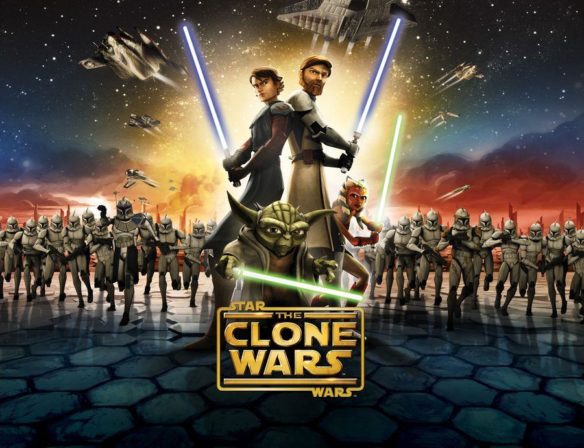
(11) TODAY’S BIRTHDAYS.
[Compiled by Cat Eldridge.]
- Born August 10, 1896 — John Gloag. His first SF novel, Tomorrow’s Yesterday, depicts a race of cat people from the distant future observing human society. It was one of five SF novels and a double handful of short stories he wrote in the Thirties and Forties. (Died 1981.)
- Born August 10, 1902 — Curt Siodmak. He is known for his work in horror and sf films such as The Wolf Man and Donovan’s Brain. The latter was made from his own novel and ISFDB notes it was part of the Dr. Patrick Cory series. He wrote quite a few other genre novels as well. Donovan’s Brain and just a few other works are available in digital form. (Died 2000.)
- Born August 10, 1903 — Ward Moore. Author of Bring the Jubilee which everyone knows about as it’s often added to that mythical genre canon, and several more that I’m fairly sure almost no one knows of. More interestingly to me was that he was a keen writer of recipes. ISFDB documents that four of his appeared in Anne McCaffrey’s Cooking Out of This World: “Kidneys — Like Father Used to Make” and “Pea Soup — Potage Ste. Germaine“ being two of them. (Died 1978.)
- Born August 10, 1913 — Noah Beery Jr. Genre-wise, he’s best remembered as Maj. William Corrigan on the Fifties classic SF film Rocketship X-M, but he showed up in other genre undertakings as well such as 7 Faces of Dr. Lao, The Six Million Dollar Man, Fantasy Island, Beyond Witch Mountain, The Ghost of Cypress Swamp and The Cat Creeps. I think he appeared in one of the earliest Zorro films made where he’s credited just as a boy, he’d be seven then, The Mark of Zorro which had Douglas Fairbanks Sr. and his father, Noah Beery Sr. (Died 1994.)
- Born August 10, 1952 — David C. Smith, 70. He is best known for his fantasy novels, particularly those co-authored with Richard L. Tierney, featuring characters created by Robert E. Howard. Most notable are the six novels which involved Red Sonja. Those novels are available on Apple Books but not on Kindle.
- Born August 10, 1955 — Tom Kidd, 67. Genre illustrator, he’s won an impressive seven Chelsey Awards. Though he didn’t win a Hugo for Best Professional Artist, he was nominated at Aussiecon Two, Nolacon, Conspiracy ‘87 and ConFiction. Since I’m fond of this Poul Anderson series, I’m giving you his cover for Maurai & Kith.
- Born August 10, 1955 — Eddie Campbell, 67. Best known as the illustrator and publisher of From Hell (written by Alan Moore) which is, errr, interesting and won an IHG Award, and Bacchus, a series about the few Greek gods who have made to our time. Though not genre, I highly recommend The Black Diamond Detective Agency which he did. It’s adaptation of an as-yet unmade screenplay by C. Gaby Mitchell.
- Born August 10, 1965 — Claudia Christian, 57. Best-known role is Commander Susan Ivanova on Babylon 5. She has done other genre roles such as being Brenda Lee Van Buren in The Hidden, Katherine Shelley in Lancelot: Guardian of Time, Quinn in Arena, Lucy in The Haunting of Hell House and Kate Dematti in Meteor Apocalypse. She’s had one-offs on Space Rangers, Highlander, Quantum Leap, Relic Hunter and Grimm. She’s Captain Belinda Blowhard on Starhyke, a six-episode series shot in ‘05 you can watch on Amazon Prime.
(12) WONG TO PEN DEADPOOL. Alyssa Wong and Martin Coccolo launch Deadpool’s next era in November.
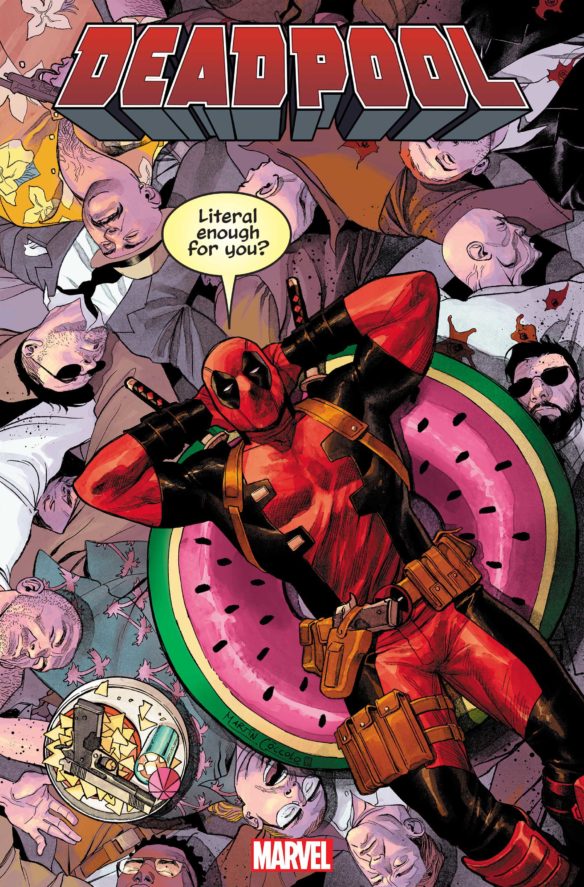
Deadpool’s new ongoing series will be written by Alyssa Wong, known for her acclaimed work on thrilling books like Star Wars: Doctor Aphra and Iron Fist, and drawn by Martin Coccolo, the artist currently wowing readers in the action-packed Hulk vs. Thor: Banner of War crossover. The two rising Marvel stars will take out their pent up aggression on everyone’s pizza-faced, jabber-mouthed, misguided, hate-to-love, love-to-hate fave in new Deadpool adventures loaded with riotous violence and relentless body horror. Deadpool’s latest solo exploits will kick off with a bang as a new mercenary group sends Deadpool on one of his most dangerous missions, an intoxicating villain unleashes a twisted plan on Wade’s body with horrifying side effects, and a hot new romance arrives on the scene to drive Wade crazy!
The world knows Wade Wilson is one of the top mercenary/assassins in the Marvel Universe, even if he is simultaneously the most annoying one…but he’s pushing to make that recognition official as he auditions for the elite group known as the Atelier. Now, he has 48 hours to kill one of the world’s most famous supervillains. Only problem? He’s been kidnapped, and something…strange…is GROWING INSIDE HIM.
“I love chaos. And what is Deadpool if not chaos incarnate? I’m honored to take the reins for Wade’s next solo adventure–expect romance, expect body horror, and expect a wild time!” Wong promises….
(13) DROPS OF WISDOM. Neil Gaiman answers tweets from people with questions about Greek, Roman, Norse, and Egyptian mythology for WIRED in “Neil Gaiman Answers Mythology Questions From Twitter”.
(14) ARTIFICIAL BURRITO INTELLIGENCE. Midjourney creates a portrait of John Scalzi. Then Chuck Wendig gets it to answer the question “What if you are what you eat?”
(15) CATCH THE WAVE. [Item by Martin Morse Wooster.] Jason Momoa talks about his roles in fantasy movies, including an explanation about why the 2011 Conan The Barbarian was awful, and reveals that Denis Villeneuve would like to adapt Dune Messiah into a third Dune movie in the British GQ article “Jason Momoa, Aquaman and real life superhero, is on a quest to save the ocean”.
Jason Momoa doesn’t exactly love that he keeps dying, if you really want to get into it. “My kids are always like, ‘Are you gonna die again? You always die,” he says, a little forlornly. “I obviously made a name for myself dying so if you see me it’s like, ‘Momoa’s gonna jump on the bomb, I know it!’”
Thus far he has been shot in the head, blown up, smothered, died by suicide, had his throat slashed, and been stabbed in both the stomach and the chest. It was watching his most recent death, in Denis Villeneuve’s sci-fi spectacular Dune with his 12-year-old son, that really got to him. “It was pretty heart wrenching, cause I was like, ‘I’m right here buddy!’ But he was like, ‘Papa nooooooooo,’ he recalls, howling like a dog at the moon. “I said: ‘Listen dude: if you’re gonna go out, go out big.’”
Which might make it sound as though the Aquaman actor is a mere mortal, but if you saw Jason Momoa walking down the street (and not, say, emerging from the ocean with a trident in his hand, and the promise of avenging his sea queen mother glinting in his eye) you might still wonder if this towering man didn’t arrive on dry land using a branch of coral as a surfboard, having caught a wave from a kingdom far more exciting than anywhere on planet earth….
(16) PRIME TARGET. Cyber warfare is unleashed in The Enigma Factor, first in the twelve-book Enigma Series by Charles Breakfield and Rox Burkey.
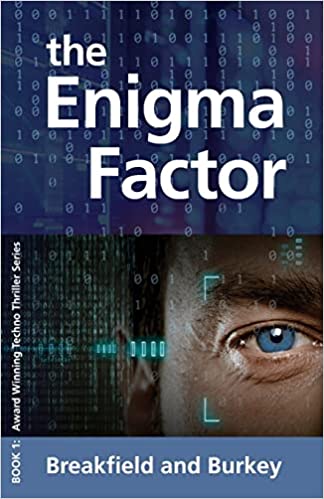
A brilliant programmer is targeted by cyber predators! Jacob Michaels, computer network security-tester extraordinaire, tries to settle into a quiet life of work to polish his cyber security skills after the death of his mother. Jacob is unaware that his growing reputation makes him a person of interest. Cyber-criminals are hunting for new recruits. They target this brilliant programmer to seduce him into joining their cause. More people are hunting him than just the Russian cyber kingpin. Jacob sets off to find those who are targeting him. He discovers he’s in the crosshairs of previously unknown global experts. Of course, having his identity erased puts him front and center above anything else.
Buzz, when looking for the easy way, makes a ghastly judgement error and inadvertently crosses the line to the darknet. He pleads to his best friend Jacob for help. Jacob, brilliant as he is, doesn’t have enough experience to help Buzz on his own. Jacob battles against global cyber masterminds using his knowledge of programming, identity theft, and hacking. He is pulled up short when his security knowledge is dwarfed following his introduction to the distractingly beautiful encryptionist Petra. Jacob’s challenge is how to keep ahead of the criminals and learn who to trust. In their debut TechnoThriller, The Enigma Factor, award-winning authors Breakfield and Burkey weave a complex tale of danger, intrigue, and international cyber combat. They use a relevant technology foundation, then layer on travel, romance, humor and mystery. Like rust, the cat and mouse game of the new cyber warfare age never sleeps.
The book is published by ICABOD Press and is available worldwide across all platforms including from Amazon.com, Amazon.ca, and as an audiobook.
Charles Breakfield is a technology expert in security, networking, voice, and anything digital. Rox Burkey is a technology professional who excels at optimizing technology and business investments. Together these Texas authors create award-winning stories that resonate with males and females, as well as young and experienced adults.
(17) IN THE BEGINNING. Vice explains how “China Is Planning to Turn the Moon Into a Giant Space ‘Shield’”.
Chinese astronomers aim to peer for the first time into the cosmic “dark ages,” an unexplored era about 200 million years after the Big Bang, by using the Moon as a shield to block out noisy radio signals caused by human activity on Earth, reports the South China Morning Post.
The Discovering the Sky at the Longest Wavelength (DSL) mission envisions sending a fleet of satellites to the Moon that could capture ultralong radio waves made by hydrogen atoms in the darkness before cosmic dawn, when the first stars were born bursting with radiant light….
(18) A FULLY OPERATIONAL ASTRONOMICAL STATION. [Item by Chris Barkley.] The NASA article is from April 2020, but it’s a nice counterpoint to the Chinese mission…JUST LIKE For All Mankind!!! “NASA’s Plan to Turn the Moon Into a Telescope Looks Like the Death Star” at Vice.

Called the Lunar Crater Radio Telescope (LCRT), the proposal is the brainchild of Saptarshi Bandyopadhyay, a robotics technologist at NASA’s Jet Propulsion Laboratory. On Tuesday, LCRT was selected for initial “Phase 1” funding ($125,000) by NASA Innovative Advanced Concepts (NIAC) program, which aims to explore advanced, far-future technologies.
LCRT is still in “very early stages of development,” said Bandyopadhyay in an email, noting that “the objective of Phase 1 is to study the feasibility of the LCRT concept.”
“[W]e will mostly be focusing on the mechanical design of LCRT, searching for suitable craters on the Moon, and comparing the performance of LCRT against other ideas that have been proposed in the literature,” he added.
Bandyopadhyay envisions building the LCRT in a crater that measures about three to five kilometers (two to three miles) in diameter. The telescope’s wire-mesh scaffolding could be delivered and erected by wall-climbing robots, such as NASA’s DuAxel rovers, which would be capable of scaling the vertical slopes of the crater…
…“LCRT could enable tremendous scientific discoveries in the field of cosmology by observing the early universe in the 10–50m wavelength band (i.e., 6–30MHz frequency band), which has not been explored by humans to date.”
In particular, the telescope could shed new light on the mysterious processes that occurred more than 13 billion years ago, as the first stars in the universe were being born, according to a 2018 paper led by Bandyopadhyay. It could also examine fine details about exoplanets that orbit other stars….
(19) VIDEO OF THE DAY. [Item by Martin Morse Wooster.] In “Honest Game Trailers: Mario Strikers: Battle League,” the Screen Junkies say that this newest edition of the Mario franchise you can have your favorite Mario characters fight each other in a battle royale that’s vaguely like soccer except people actually score goals and you can drop kick your opponents into a giant banana. “This is a fun family game to play together,” the narrator says, “which will naturally lead to you cussing out your friends and family while you’re in front of the TV.”
[Thanks to Andrew Porter, Chris Barkley, Michael Toman, Cora Buhlert, Cat Eldridge, Mike Kennedy, Martin Morse Wooster, JJ, and John King Tarpinian for some of these stories. Title credit belongs to File 770 contributing editor of the day Camestros Felapton.]



